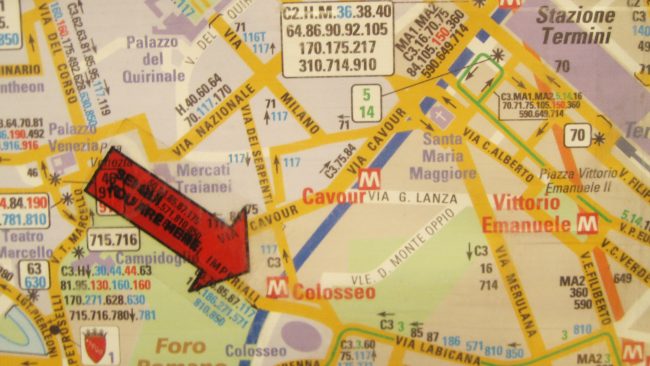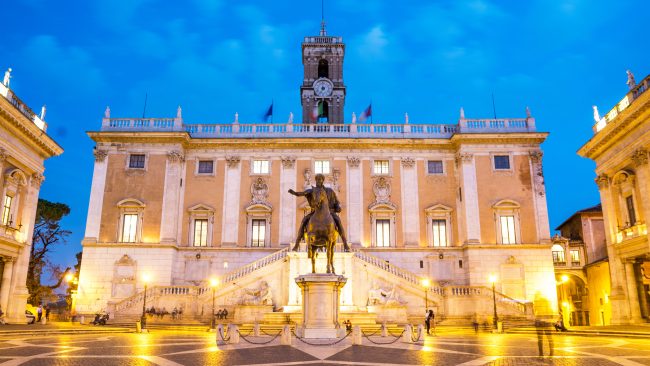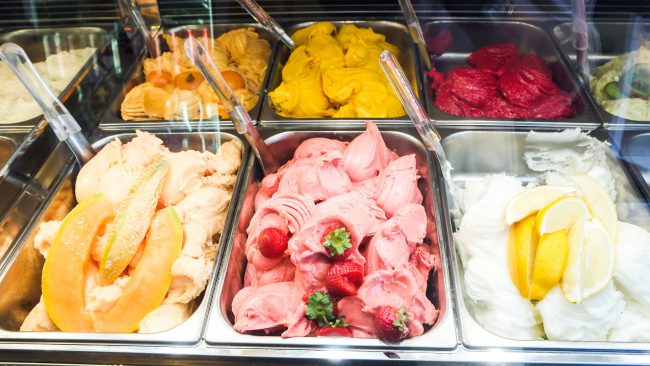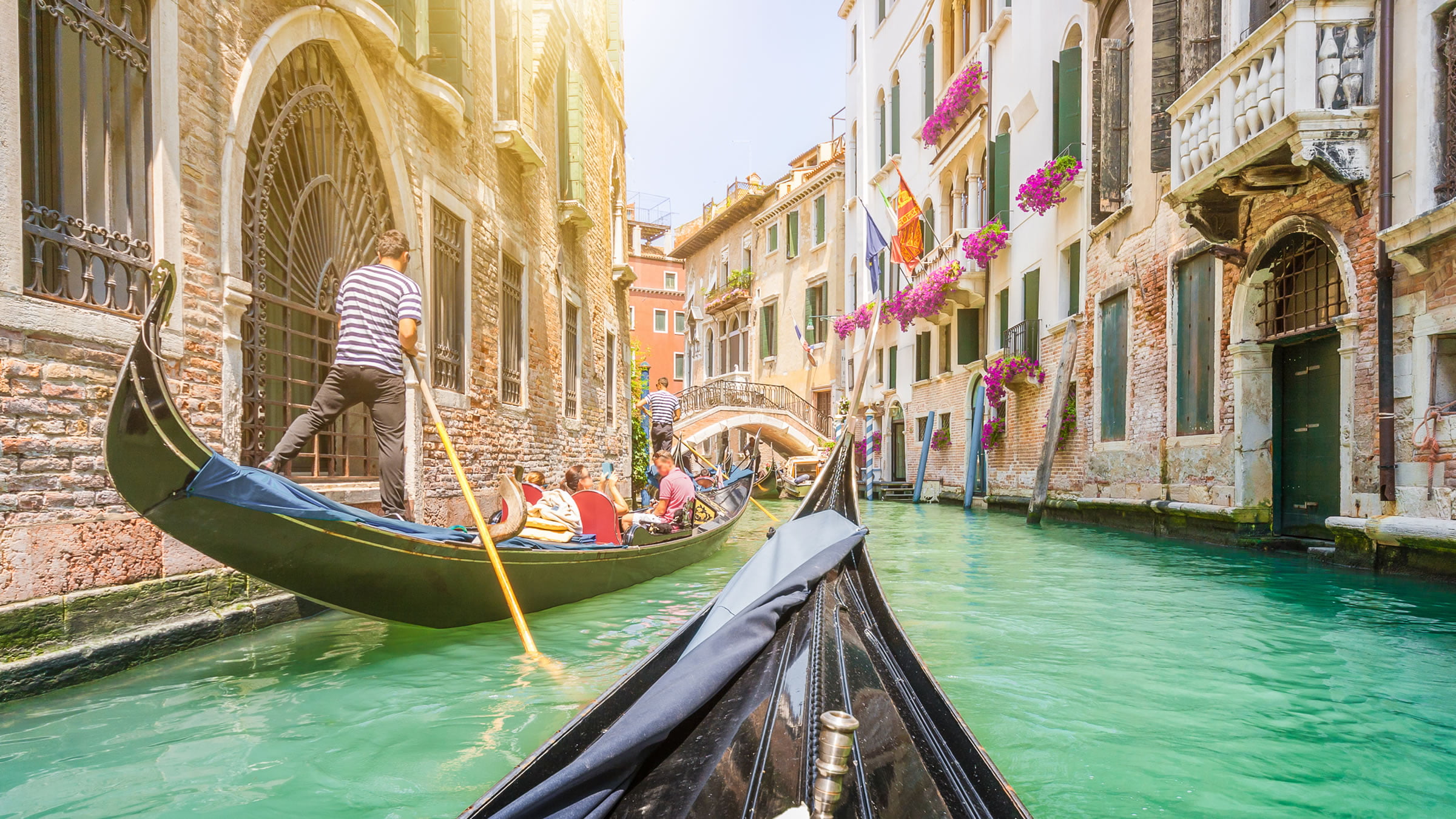Visiting Rome is an excellent idea for lovers of history and architecture. It is an ideal city to visit at any time of the year. In this tourist guide in Spanish you will find useful tips, as well as the essential places and most recommended itineraries in the city.
Below you have an index with all the points that we are going to deal with in this article.
Article Index
- 1.
- 2.
- 2.1.
- 2.2.
- 2.3.
- 2.4.
- 2.5.
- 2.6.
- 2.7.
- 2.8.
- 2.9.
- 2.10.
- 2.11.
- 3.
- 3.1.
- 3.2.
- 3.3.
- 3.4.
- 3.5.
- 4.
- 5.
- 6.
- 7.
Information
The historical antecedents of tourism take us to Imperial Rome, as it was one of the first places where it began to practice. For this reason, it is not surprising that tourism is one of the great pillars of Rome, since each year it receives almost 9 million visitors.
The requirements to visit Italy vary depending on the place of origin. In the case of Spain, only the DNI is necessary, but other countries like Colombia need a passport, while others must apply for a visa as well. To learn more, visit the following article: Tips, documentation and requirements to travel to Italy.
If you decide to visit Rome and you want to know the city in the best possible way, you should know that there are a large number of tour guides in Spanish. Some are even free and are supported by tips. Therefore, you can get to know Rome without knowing Italian.
It is a good idea to visit the city as a family, since it is a destination that is interesting to children and teenagers. In addition, children under 9 years are free on public transport, as well as in some museums.
If you are traveling with a baby, you should bear in mind that the streets are cobbled and some areas are difficult to access, therefore, it is advisable not to bring a stroller. As for the elderly and disabled, they may also have some difficulty, but there are special itineraries, as well as adapted buses.
Nor is it necessary to leave your pet at home, since it is allowed to stay with a dog in some hotels. They can also go on the subway, provided they are small or medium-sized and have their own ticket. Unfortunately, they cannot access the museums and attractions.
Rome is a highly sought after destination, therefore large travel agencies, such as Halcón Viajes or Nautalia, offer interesting scheduled trips. However, it is also easy to organize the trip to go on your own.
You should know that in Rome you pay one tourism rate, which is € 3 per night if you stay in a four or five star hotel and € 2 if you stay in a lower category.
Although it is a relatively expensive city, since it is the capital of the country and an important tourist center, it is possible to travel with little money, and even as a backpacker, since we find a good offer of hostels and establishments low-cost.
In terms of transport, Rome has a metro, bus and tram. Tourists can purchase the card Rome Pass, with which it is possible to use unlimited transport. Its price is € 28 for 48 hours and € 38,5 for 72. It also includes discounts and passes to museums.
Throughout 2016, Italy suffered some earthquakes. However, none caused damage in Rome, so you can continue to travel to the capital safely.
The opinions of people who have already visited the city are positive. The gastronomy and historical monuments stand out, since it is a destination with an important heritage, so some people prefer it over other capitals such as Paris o London.
If you want to receive information in Spain, you can go to the Tourist Office of Madrid, which is located at 120 Serrano Street. Barcelona There is no headquarters and the only official building is the Consulate General, which is at 270 Mallorca street.
Also, there are different applications (app) for your mobile and tablet. You can also find different guides in format ePub, ideal to carry in your eBook.
In the following tourist map you can see the location of the Colosseum in Rome, as well as the nearby attractions and the metro connections. You can buy one at the city's tourist offices or on the official website that we have told you about.
What to see and do
Rome is full of buildings of great value, for both history and architecture lovers. Although it is difficult to choose a few, here are the 10 must-see tourist places on your first visit to the city.
Coliseum
It is the most famous building. It was built in the 500st century, and was used for almost 50.000 years. It had a capacity of XNUMX people and gladiator fights were carried out.
Its closing hours vary from month to month, but the building opens every day at 08:30. The price for adults is € 12 and, for young people from the European Union between 18 and 24 years old, € 7,5. For those under 17 in the European Community, admission is free.
Roman Forum
They are the remains of the central area of the Roman Empire. In this part were the market, places of worship and government institutions.
Among its buildings, the Arch of Titus and the Via Sacra stand out, a path that crosses the Forum and reaches the Colosseum.
navona square
It is a square full of sculptures, fountains and important buildings. The most prominent fountain is that of the Four Rivers, built by Bernini. Until the XNUMXth century, in summer the square was flooded to turn it into the so-called "Lake of Piazza Navona".
Pantheon of Agrippa
It is a large circular temple built in the XNUMXnd century, in which important architectural innovations were applied. Its great dome stands out. King Victor Manuel II is buried in it.
Admission is free and is open every day: Monday to Saturday from 8:30 a.m. to 19:30 p.m. and Sundays from 09:00 a.m. to 18:00 p.m. Therefore, it has long hours, perfect for tourists.
Trevi Fountain
It stands out for its dimensions, since it is forty meters wide. It is the most monumental fountain of the Baroque. It is located in what was the end of an important aqueduct in the city.
The fountain is headed by a sculpture of Neptune on a chariot guided by two tritons. Tourists toss one to three coins at it, which means that every year around a million euros are collected from inside.
Plaza España
It is one of the most beautiful squares in Rome. It is located in the neighborhood with the best streets for shopping: Campo Marzio. Its long staircase is impressive, on which tourists and locals usually sit. In it, a fashion show even takes place.
In the center of the square we find the Barge Fountain, also made by Bernini, this time with the help of his son, Gian Lorenzo Bernini.
Vatican City
Despite being in the interior of Rome, since 1929 it has been an independent state. The Vatican is the seat of the Catholic Church. It has a total of 900 inhabitants and 20% of its territory is occupied by the Plaza de San Pedro.
This square is the center of the Vatican City. In it a large Egyptian obelisk was placed. Its measurements are 320 meters long and 240 meters wide.
It is surrounded by colonnades, in which we can find a total of 140 statues made by Bernini. From here you can access the Basilica of San Pedro. In addition to the large buildings, its gardens are beautiful. It is a place of pilgrimage and the center of religious tourism.
Monument to Victor Manuel II
This large marble construction, completed at the beginning of the 135th century, measures 70 meters wide and XNUMX meters high. It has always been a source of debate, due to its contrast with the nearby monuments.
This great monument is also known as the Altar of the Fatherland. In it is the grave of an unknown soldier in which there is a flame of fire that never goes out.
At 450 meters we located Trajan's Column, a monument 38 meters high and 40 tons in weight. In it two victories are narrated against the Dacians achieved by the emperor Trajan.
Campidoglio Square
This square was designed by Miguel Ángel. In the center is the equestrian statue of Marcus Aurelius. To access it, you have to climb a stairway known as «The Cordonata Capitolina«.
Basilica of Saint Peter in Vincoli
Inside is one of the most important sculptures in the history of art, Michelangelo's Moses, which crowns the mausoleum of Pope Julius II. This Moses has horns on his head, which is said to have been caused by a translation error.
Other attractions and activities
If this is your second visit to the city, or you want to discover a non-touristy place that hardly anyone sees, we recommend you go to Orange Garden, which is located on Mount Aventine, one of the seven hills that make up Rome. From here there are privileged views, ideal to enjoy the sunset.
Another little-known attraction is the Cestia Pyramid, built in 12 BC. It is an Egyptian-style pyramid measuring 36 meters high and 30 meters wide and which houses the tomb of a praetor, a high official of the Roman Empire.
Also, dare to visit the Mouth of Truth and put your hand in it. It is a marble sculpture in the shape of a giant mask. According to legend, when someone was accused of lying, they would put their hand in their mouth. If he lied, the top of it would fall off and break the liar's hand.
The most adventurous cannot miss visiting the catacombs, some galleries that are underground and in which some inhabitants were buried between the 12nd and XNUMXth centuries. In them, inscriptions and frescoes are still preserved. There are five open to the public. Those of San Sebastián have an extension of XNUMX km.
Rome is a city with important museums. The Capitoline Museums and the Vatican Museums, where we find sculptures such as "Laocoon and his sons" and the famous fresco "The School of Athens" by Raphael. In addition, you can take the opportunity to enter the Sistine Chapel.
Although a ticket must be pasted to access many attractions, there are also places where you can access free, like the Villa Borghese or the Circus Maximus, where it is not necessary to queue either.
Please note that the last Sunday of each month, the Vatican Museums are free. The rest of Sundays, they remain closed. On the other hand, the rest of the museums close on Mondays.
When the sun goes down in Rome, the things to see and do do not stop. There are various walking tours to discover the most beautiful areas at night. If you want a bit of partying, we recommend the Testaccio neighborhood, where pubs and entertainment venues are concentrated.
The little ones are usually surprised by the big buildings like the Colosseum. However, there are sites dedicated exclusively to them, such as Explore, a museum geared towards children. Another option is to go on a bicycle route with the whole family.
Neighborhoods
Rome is made up of a total of 17 neighborhoods. However, the main ones for your visit to the city, in addition to those already mentioned, are the following:
Trastevere
It is the bohemian area. In it the Piazza di Santa Maria stands out. Its narrow and cobbled streets give it a special charm. The best restaurants in the city are located there.
It is a neighborhood where many foreigners live, since it is home to the Academia de España and two private American universities: John cabot university y The American University of Rome.
Parone
Its center is Piazza Navona, of which we have already spoken. You can't miss the Plaza either Field of 'Fiori, in which every morning, from Monday to Saturday, there is a market.
This square is so called because until the XNUMXth century a flower meadow was located in its place. It was built because it was to become a place of passage for illustrious and powerful people, since important buildings were built near it.
Jewish ghetto
From 1555 until the XNUMXth century, Jews were isolated in this neighborhood, which led to the crowding of houses. Its restaurants are known kosher and the Fountain of the Turtles.
On the border is the Plaza Largo di Torre Argentina, place where Julius Caesar was assassinated in 44 BC Also, in this square we find the remains of the Theater of Pompey and four republican Roman temples.
palatine
It is the most central hill and one of the oldest parts. According to legend, here is the cave of the she-wolf that suckled Romulus and Remus. Some houses of the upper class of the Roman Empire are preserved, such as that of Octavio Augusto.
A further hill is that of Monte Sacro, known and visited by Venezuelans, since in it the military man Simón Bolívar took an oath for the freedom of Venezuela.
Monti
The area preferred by young people. It is full of art galleries and craft workshops. In it, the Basilica of Santa María Mayor and that of San Pedro Advíncula stand out.
It is considered the first neighborhood o rione from Rome. Its name is due to the fact that in ancient times four different hills were within its territory, which in Italian are said Mountains.
The surroundings.
It is necessary to spend enough days in Rome to know it deeply. However, if you have time, you can take the opportunity to visit other interesting points in Italy.
Just 25 kilometers from the capital is located funfair, where we find Villa Adriana, which belonged to Hadrian and was the largest villa of all that the emperors had. Another nearby destination is Civitavecchia, which takes an hour by train.
If you want to go further, there are a multitude of package tours in which to visit the most outstanding Italian cities: Florence, Venice, Pisa and Pompeii. There are even tours that take a tour of Italy and the Holy Land (Galilee, Jerusalem, etc).
Another option is to spend the day at Nápoles. From the station Terms There are trains that take less than two hours to arrive. In this way, you can take the opportunity to also visit the Island of Capri.
A further alternative is that of Reggio Calabria. The train journey is at least five hours, since the distance between Rome and this coastal city is 700 kilometers.
If you have come from far and want to take advantage of your stay to get to know the Mediterranean better, a nearby country is Greece. From Rome there flights to Athens, Thessaloniki and Crete, among other destinations.
Itineraries
Depending on the time you are going to spend in the city, you have some possibilities or others. If you are going to be a weekend of two or three days, our advice is that you visit the 10 essential places that we have talked about above.
If you are going to stay five or six days in the city, you can do something more different, such as visiting the catacombs. If you have more than a week, go on an excursion around Rome.
On the other hand, if you are from cruise And you are only going to spend a few hours in the city, then take a tourist bus to know the most important things, which will only take you one morning or afternoon.
Depending on your tastes, you can also organize a more specific itinerary. History lovers have it easy, since a tour of the urban center allows you to see the most important architectural gems.
Rome is also visited by practitioners of religious tourism. If this is your case, these are the most important churches in the city:
- Basilica of Santa Maria la Mayor
- St. Peter's Basilica
- Basilica of San Clemente
- Basilica of Saint Mary of the Angels and of the Martyrs
- Basilica of Saint Paul Outside the Walls
- Basilica of saint john
If what suits you is alternative tourism and you want to do a different itinerary, in Rome modern buildings abound. Among them, Maxxi stands out, the National Museum of Art of the XXI century. Also, you can see the graffiti de MURo, the Museum of Urban Art, and those of the Torpignattara and Ostiense neighborhoods.
It is also possible to know the most sustainable areas of the city, its parks. There are a lot of environmentally responsible gardens. Those that stand out the most are the following:
- Villa Borghese
- Villa Ada
- Villa Torlonia
- Villa Pamphili
- Villa Clemontana
How to get
As the saying goes, all roads lead to Rome, so you can travel to the city by different means. It is not advisable to go by car, since the center is limited to residents and it is difficult to park, unless you do it on the outskirts.
If you plan to go in motor home, the capital has different parking areas and campsites connected to the tourist center by public transport. If you come by train from another city, you will arrive at the station Terms, perfectly linked with the rest of the city.
Also, Rome has two airports: Leonardo da Vinci International Airport, known as Fiumicino, and Giovanni Battista Pastine or Campino Airport, where companies arrive low-cost as Ryanair.
If you are from Spain, a good number of cities have direct flights. Among them we find Madrid, Alicante, Barcelona and Valencia. From others like Sevilla or Zaragoza, sometimes it is necessary to transfer.
From South America, depending on the country, we can find direct flights, as is the case from Buenos Aires (Argentina), or flights with a stopover, such as from Montevideo (Uruguay).
Most of the cruise ships that pass through Italy, among which those of the Grimaldi company stand out, stop in Civitavecchia. As we have already said, the best option to get from the port to Rome is to take a train to the station Terms, although the bus option is also available.
When to travel
Rome boasts a Mediterranean climate. The mildest temperatures occur in spring and autumn. However, at this time there are abundant Rain. Some plans for rainy days are to visit a covered market like Eataly, buy in the Galleria alberto sordi or enter a museum.
Winter is mild, although extreme changes and snow occasionally occur. Also, strong winds are common. For this reason, you should wear warm clothing, as well as comfortable and insulating shoes.
As for the summer, it is hot, but very humid. It is best to wear fresh clothes, but keep in mind that to enter the Vatican there is a special code of clothing. Don't forget to have water on hand to hydrate yourself.
Therefore, the best months to visit Rome are May, June, September and October, since the temperatures are mild and there are not as many tourists as in July and August. You can also take advantage of some holidays, such as Easter and Christmas, to enjoy the city with a special atmosphere.
This article has been shared 54 times. We have spent many hours collecting this information. If you liked it, share it, please:
































